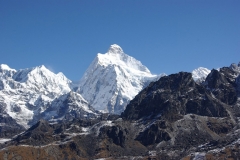
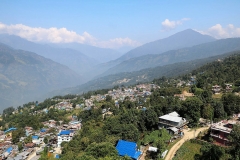
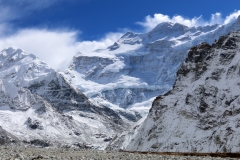
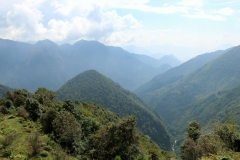
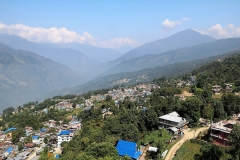
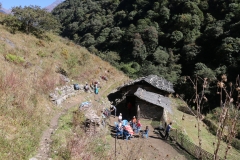
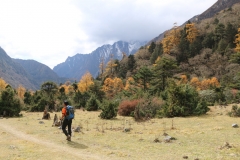
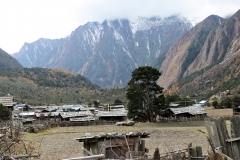
Kanchenjunga Circuit Trekking is one of the great Himalayan trails, which covers the eastern part of Nepal. Kanchenjunga (8586m) is the third highest mountain in the world and is situated in North-East Nepal and is bordered by Sikkim, India. Since the mountain partly lies in Nepal and partly in India, the view of Kanchenjunga can be seen from India, Bhutan, and Tibet.
The trail takes you two base camps North Kanchenjunga Base Cam and South Kanchenjunga Base Camp. The Kanchenjunga Northern Base Camp trails go through the Pang Pema and southern Base Camp trail goes through the Oktang but if you don’t have time to make a Kanchenjunga circuit trek means both base camps it is possible to operate only one Base Camp trek either Northern base camp or southern base camp with Sele-la pass or without.
The trekking route is considered the most beautiful regions for trekking in Nepal. One of the main highlights of this trek is Kanchenjunga Conservation area which covers an area of 2035 square kilometres. The area is home to many flora and fauna as well as various wildlife including Himalayan black bear, musk deer, snow leopard, red panda, wild boar and many others.
The route to basecamp offers variations in landscapes from alpine grasslands to sub-tropical forests, low river valley, glacial moraine, and rocky scree slopes. Throughout the trekking, trekkers get to relish the stunning panoramic view of the massive mountain peaks such as Kanchenjunga Main (8586m), Yalung (8505m) Kanchenjunga Central (8482m) Kanchenjunga south (8476m), Kumbhakarna /Janu (7711) and many others. The Kanchenjunga region is inhabited by a mixed community of Limbu, Sherpa, Rai, and Gurung, which provides an opportunity for trekkers to understand their culture and lifestyle.
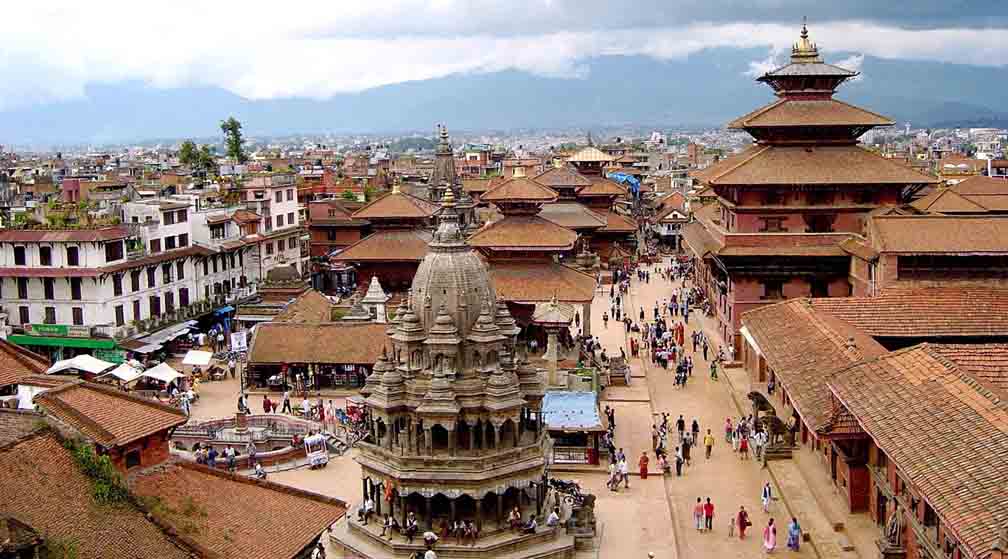 Arrival in Kathmandu airport and meet with our staff at the airport then transfer to Hotel by private vehicle. Welcome drinks and short briefing about your trek, relax.
Arrival in Kathmandu airport and meet with our staff at the airport then transfer to Hotel by private vehicle. Welcome drinks and short briefing about your trek, relax.
Accommodation: B&B/hotel.
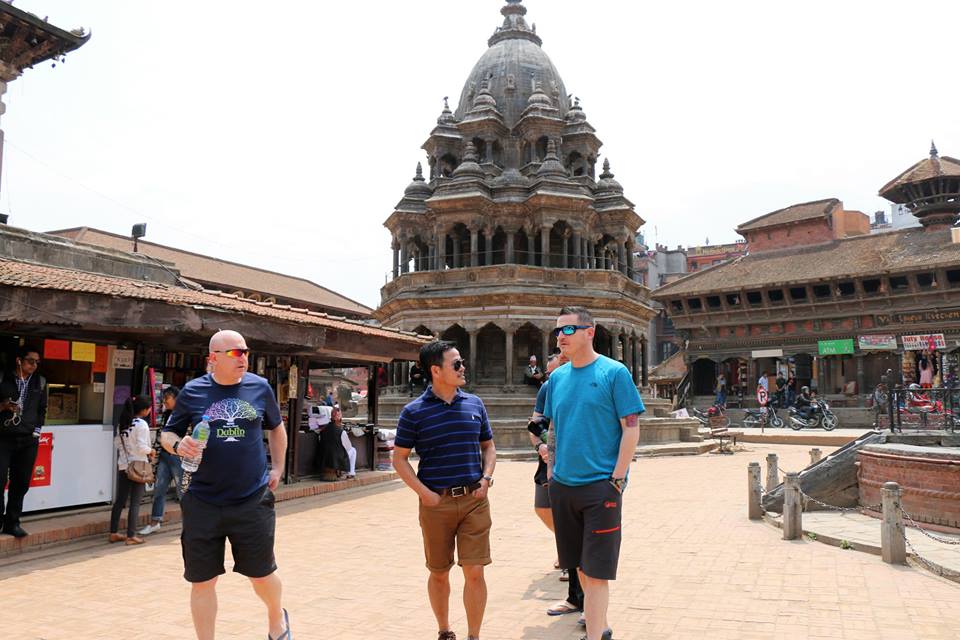 Tourist attractions: Patan Durbar Square, Thamel, cultural and historical sights of the Kathmandu Valley.
Tourist attractions: Patan Durbar Square, Thamel, cultural and historical sights of the Kathmandu Valley.
Accommodation: B&B hotel.
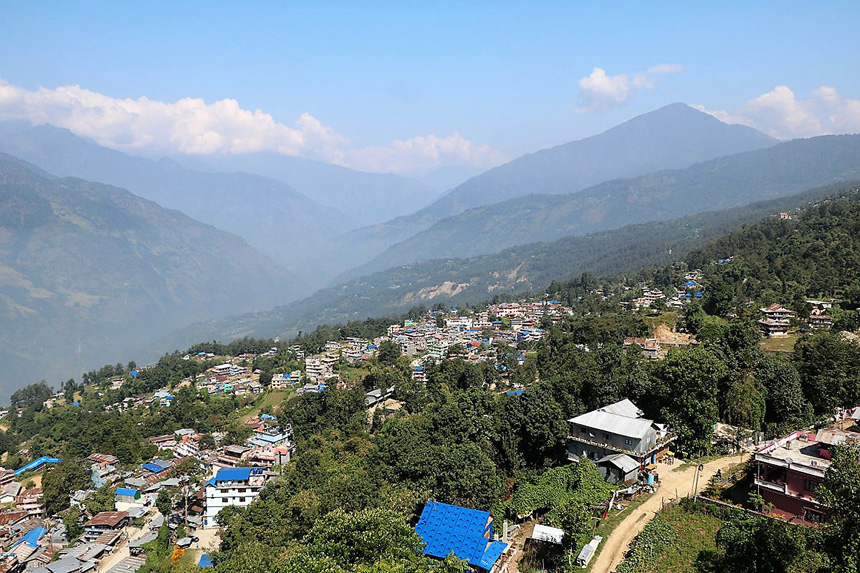 We will take a morning flight (45 min) to Bhadrapur and then continue our journey with a long drive to Taplejung 6-7 hours,
We will take a morning flight (45 min) to Bhadrapur and then continue our journey with a long drive to Taplejung 6-7 hours,
On the way, we pass through Phikal, Ilam and Phidim. Ilam is the largest tea plantation area in Nepal. Accommodation: B&B/hotel.
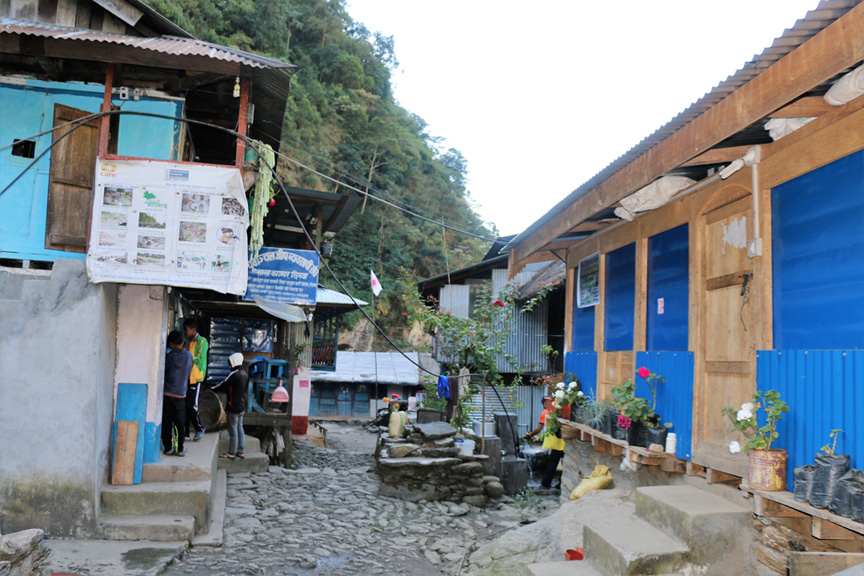 Drive through Nepal’s lush, green and diverse mid hills, following shimmering rivers and contouring around precipitous ridgelines. The villages we pass through are Hindu and Buddhist with traditional mud-brick houses and are dotted with rice paddies, terraced fields, fruit trees and cardamom farms. Once we reached Mitlung we start trekking for the day one. The trail passes through the Limbu and Tamang villages. We will finally descend to the Thiwa Khola, crossing it on a wooden bridge, before the final leg of up and down before arriving at the small market town of Chhirwa. Accommodation Tea house/Tent
Drive through Nepal’s lush, green and diverse mid hills, following shimmering rivers and contouring around precipitous ridgelines. The villages we pass through are Hindu and Buddhist with traditional mud-brick houses and are dotted with rice paddies, terraced fields, fruit trees and cardamom farms. Once we reached Mitlung we start trekking for the day one. The trail passes through the Limbu and Tamang villages. We will finally descend to the Thiwa Khola, crossing it on a wooden bridge, before the final leg of up and down before arriving at the small market town of Chhirwa. Accommodation Tea house/Tent
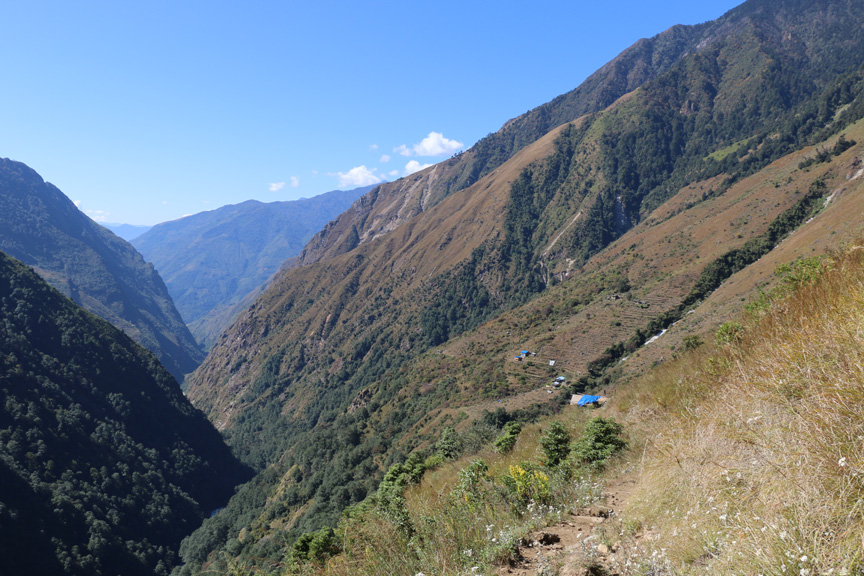 Today we pass through Limbu, Rai, Tamang and Sherpa villages. The trail follows the Tamur River and climbs a spur before descending to the Simbua Khola, which originates from the Yalung Glacier on the south of Kanchenjunga. After another ridge, we join the steep and narrow Ghunsa Khola Valley and then where the confluence of the Tamur River and Ghunsa Khola meet it is only several minutes’ walk from Hellok. Accommodation Tea house/Tent
Today we pass through Limbu, Rai, Tamang and Sherpa villages. The trail follows the Tamur River and climbs a spur before descending to the Simbua Khola, which originates from the Yalung Glacier on the south of Kanchenjunga. After another ridge, we join the steep and narrow Ghunsa Khola Valley and then where the confluence of the Tamur River and Ghunsa Khola meet it is only several minutes’ walk from Hellok. Accommodation Tea house/Tent
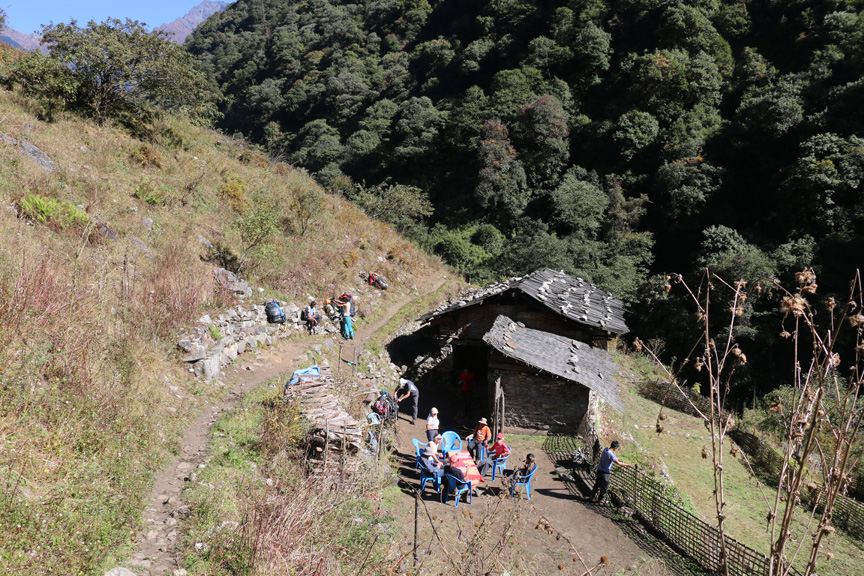 From Hellok we trek northeast along the Ghunsa Khola gaining altitude as we head towards Kanchenjunga South Base Camp. Today’s walking is on exposed terrain with steep uphill after our lunch stop at Jaubari, bringing us to the Tibetan village of Amjilossa where we will stay for the night. Accommodation Tea house/Tent
From Hellok we trek northeast along the Ghunsa Khola gaining altitude as we head towards Kanchenjunga South Base Camp. Today’s walking is on exposed terrain with steep uphill after our lunch stop at Jaubari, bringing us to the Tibetan village of Amjilossa where we will stay for the night. Accommodation Tea house/Tent
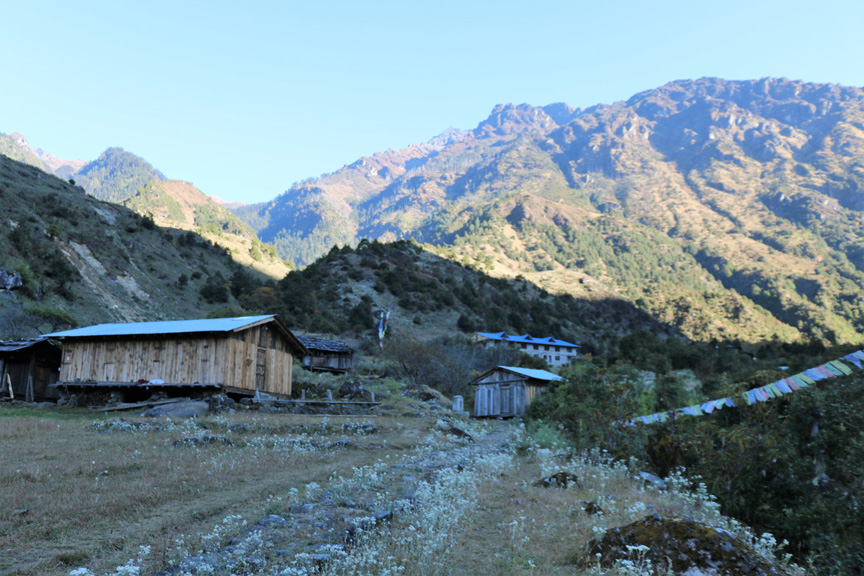 Today we will walk through rhododendron and bamboo forests. After lunch, we will start our ascent to the destination of the day, Gyabla. Nearing our destination, we need to keep an eye out for a big waterfall on the opposite side of the river as this signals our imminent arrival at Gyabla, one of the beautiful village, with amazing views. Accommodation Tea house/Tent.
Today we will walk through rhododendron and bamboo forests. After lunch, we will start our ascent to the destination of the day, Gyabla. Nearing our destination, we need to keep an eye out for a big waterfall on the opposite side of the river as this signals our imminent arrival at Gyabla, one of the beautiful village, with amazing views. Accommodation Tea house/Tent.
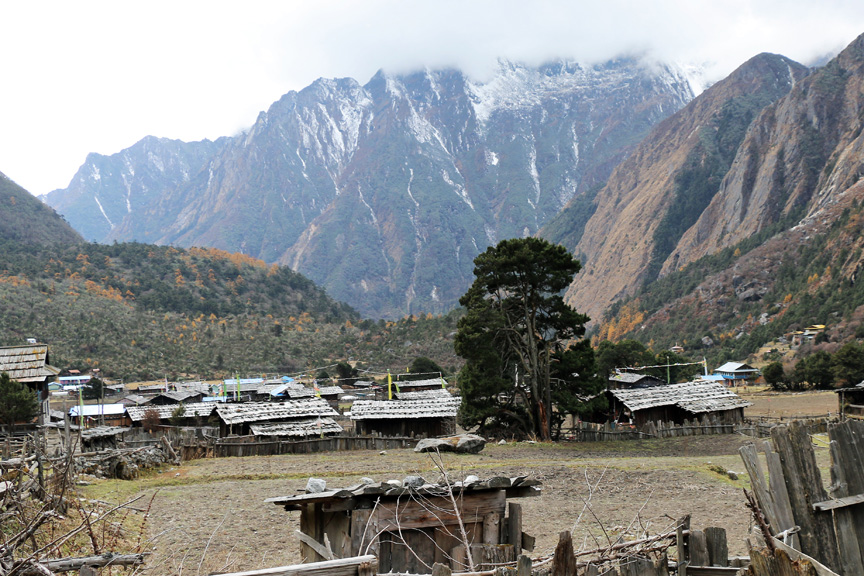 Today we head for not only the largest but the last village in the valley, Ghunsa. Ghunsa is a picturesque Tibetan village with wooden houses, a micro hydropower plant, school and a health post. There are also several lodges and shops in the village and a small Kanchenjunga Conservation Area office. Ghunsa is the junction for all the trekkers coming and going to KBC and the Salele Pass. From Gyabla, the trail crosses a broad meadow past a village and climbs a gentle hill before descending to cross the river into the village of Ghunsa. Accommodation Tea house/Tent.
Today we head for not only the largest but the last village in the valley, Ghunsa. Ghunsa is a picturesque Tibetan village with wooden houses, a micro hydropower plant, school and a health post. There are also several lodges and shops in the village and a small Kanchenjunga Conservation Area office. Ghunsa is the junction for all the trekkers coming and going to KBC and the Salele Pass. From Gyabla, the trail crosses a broad meadow past a village and climbs a gentle hill before descending to cross the river into the village of Ghunsa. Accommodation Tea house/Tent.
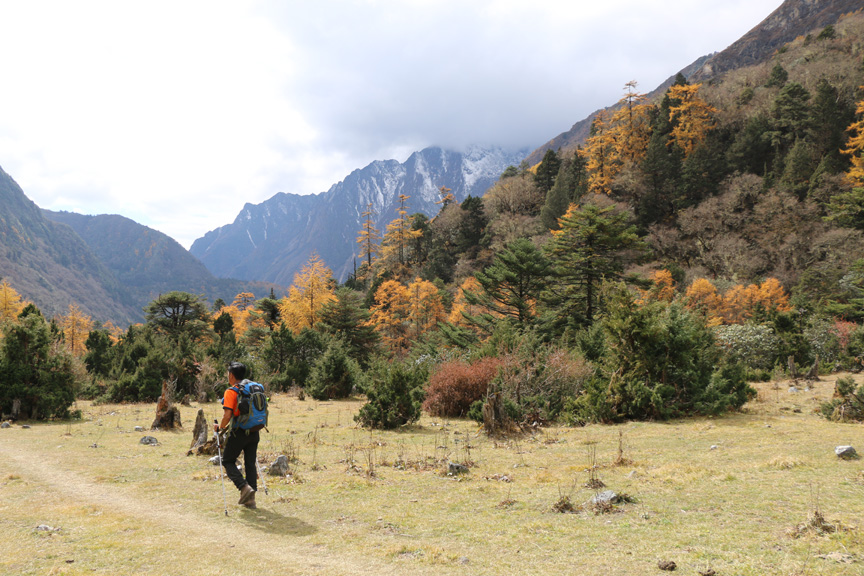 Today we do a morning acclimatization hike to another side of the river with a gain of about 400 m, taking about 3.5 hours for the round trip. The rest of the day can be spent relaxing and exploring the lively Tibetan village of Ghunsa. Accommodation Tea house/Tent.
Today we do a morning acclimatization hike to another side of the river with a gain of about 400 m, taking about 3.5 hours for the round trip. The rest of the day can be spent relaxing and exploring the lively Tibetan village of Ghunsa. Accommodation Tea house/Tent.
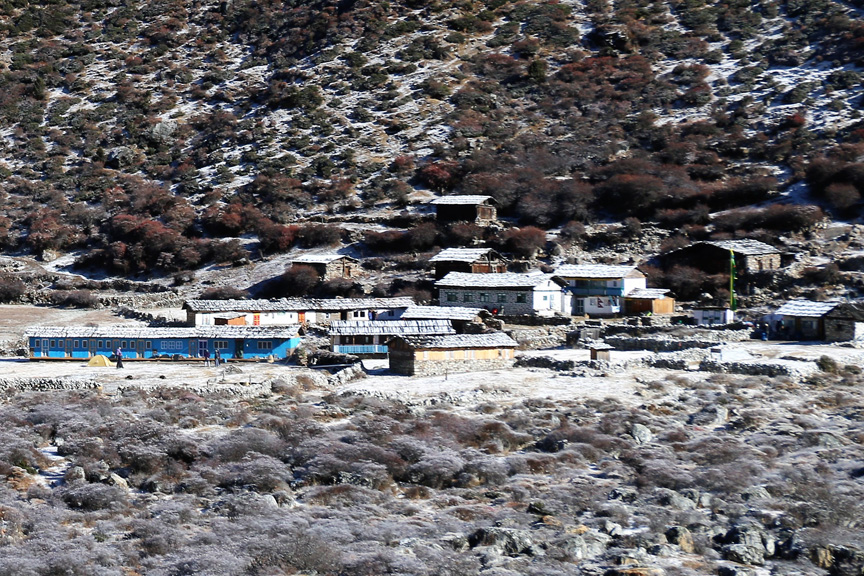 From Ghunsa the trail makes a gradual ascent through beautiful pine and rhododendron forests along the south bank of the Ghunsa Khola, passing several many walls and mountains along the way. We should cross several scree slopes and some glacial moraine before we drop down to Khambachen, our home for the night. Khambachen is a Tibetan settlement with about a dozen houses nestled in a grassy plain surrounded by mountains and a very impressive view of the huge north face of Jannu.The local people call it Khumbakarna. Accommodation Tea house/Tent.
From Ghunsa the trail makes a gradual ascent through beautiful pine and rhododendron forests along the south bank of the Ghunsa Khola, passing several many walls and mountains along the way. We should cross several scree slopes and some glacial moraine before we drop down to Khambachen, our home for the night. Khambachen is a Tibetan settlement with about a dozen houses nestled in a grassy plain surrounded by mountains and a very impressive view of the huge north face of Jannu.The local people call it Khumbakarna. Accommodation Tea house/Tent.
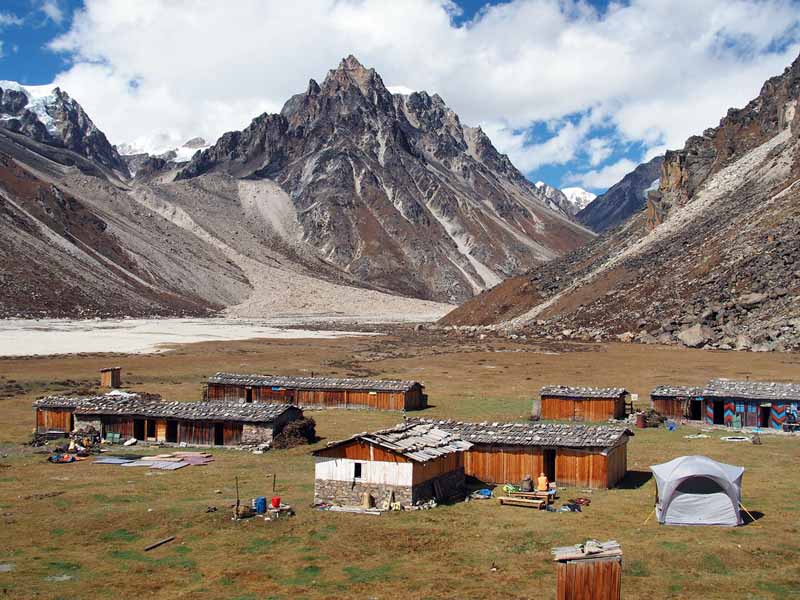 We will trek alongside of the Ghunsa Khola, staying on the left (north) side of the Kanchenjunga Glacier, due to its high elevation, the views are fantastic as we will be surrounded by some of the highest snow-peaks on the planet. Accommodation Tea house/Tent.
We will trek alongside of the Ghunsa Khola, staying on the left (north) side of the Kanchenjunga Glacier, due to its high elevation, the views are fantastic as we will be surrounded by some of the highest snow-peaks on the planet. Accommodation Tea house/Tent.
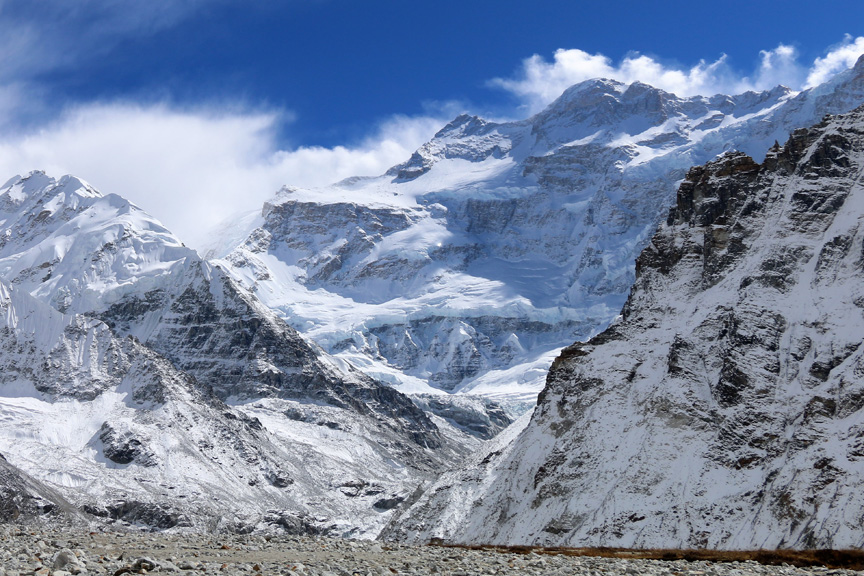 Elevation reached: 5200m at Base Camp. Terrain: Difficult/strenuous Uneven, ridge tracks, rocky, uphill and flat trails. Mountain Views: Too many to mention! You will be surrounded by an icy wonderland, get your cameras at the ready! Congratulations, you made it! You reached the base camp to the 3rd highest mountain in the world. Things to see: You may see a group of mountaineers preparing to attempt a Kanchenjunga summit. Accommodation Tea house/Tent.
Elevation reached: 5200m at Base Camp. Terrain: Difficult/strenuous Uneven, ridge tracks, rocky, uphill and flat trails. Mountain Views: Too many to mention! You will be surrounded by an icy wonderland, get your cameras at the ready! Congratulations, you made it! You reached the base camp to the 3rd highest mountain in the world. Things to see: You may see a group of mountaineers preparing to attempt a Kanchenjunga summit. Accommodation Tea house/Tent.
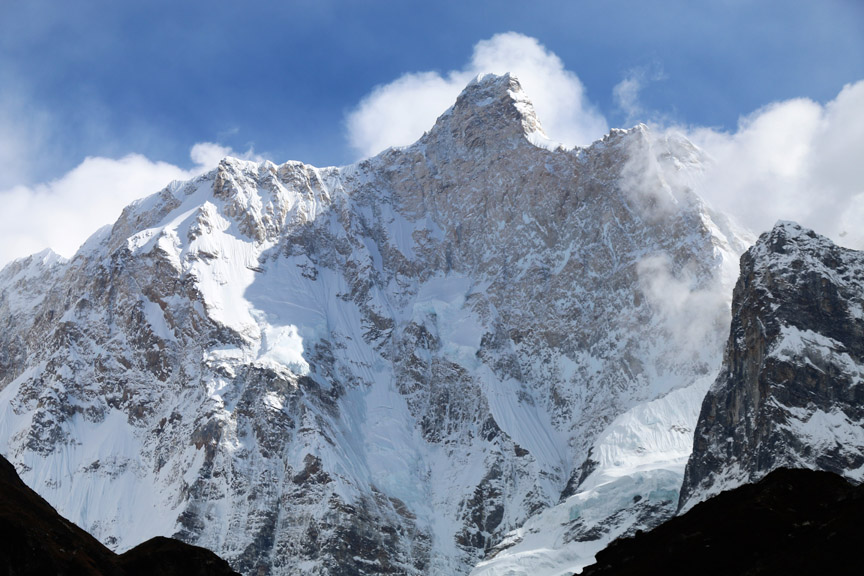 We will retreat our footsteps back to khamgpachen, Accommodation Tea house/Tent.
We will retreat our footsteps back to khamgpachen, Accommodation Tea house/Tent.
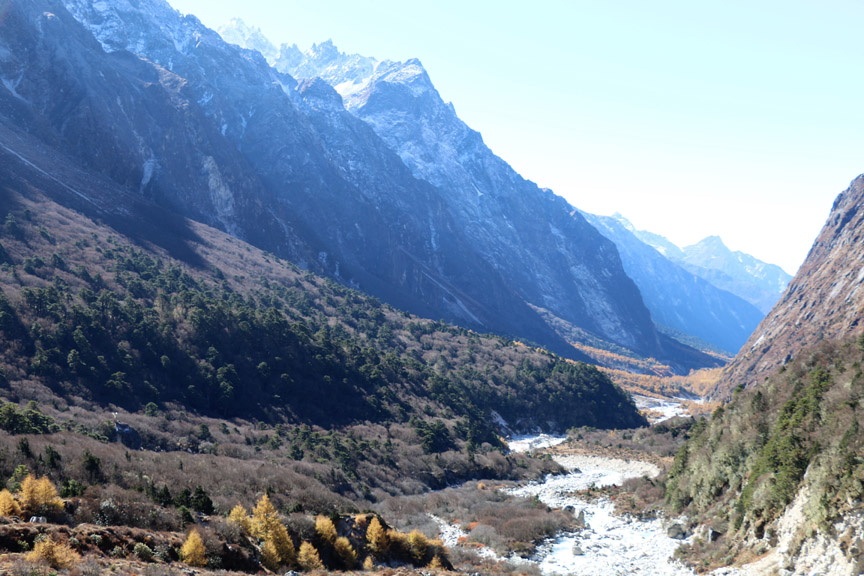 We will retreat our footsteps back to Ghunsa. Accommodation Tea house/Tent.
We will retreat our footsteps back to Ghunsa. Accommodation Tea house/Tent.
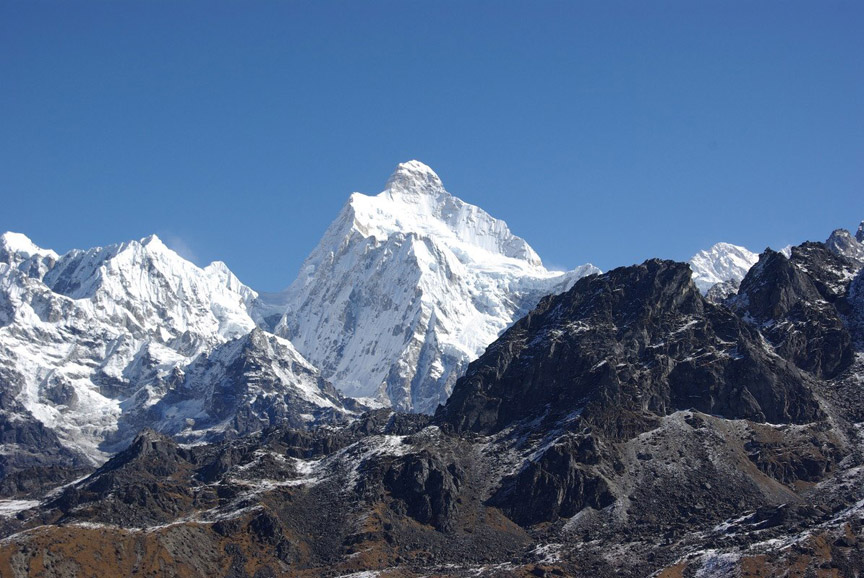 Today is a bit of a classic, taking us crossings on our way to Tseram, the highest being Sele La (4,480 m) and Sinon La (4,660 m). After completing the final pass of the day, we descend a 1,000 m to Tseram, where we will camp for the night. Accommodation Tea house/Tent.
Today is a bit of a classic, taking us crossings on our way to Tseram, the highest being Sele La (4,480 m) and Sinon La (4,660 m). After completing the final pass of the day, we descend a 1,000 m to Tseram, where we will camp for the night. Accommodation Tea house/Tent.
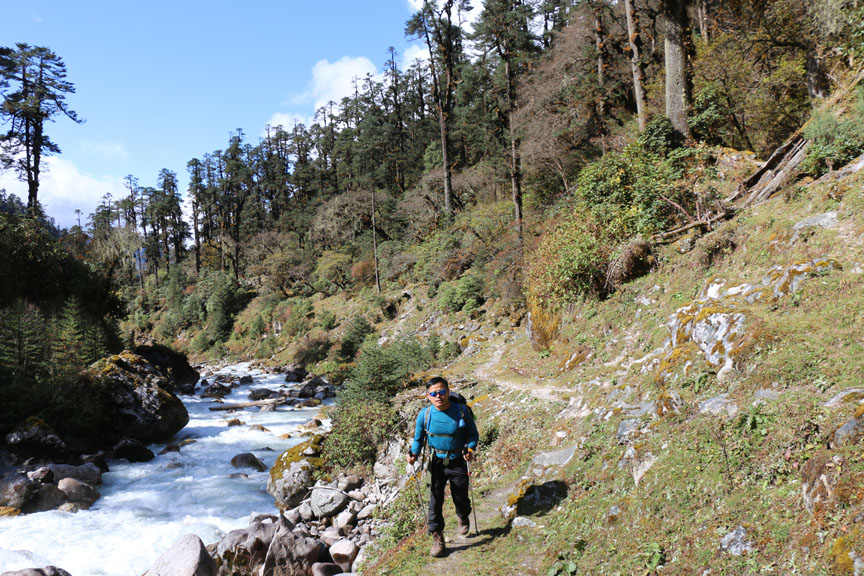 We steadily descend through a forest of rhododendrons to Tortong. Accommodation Tea house/Tent.
We steadily descend through a forest of rhododendrons to Tortong. Accommodation Tea house/Tent.
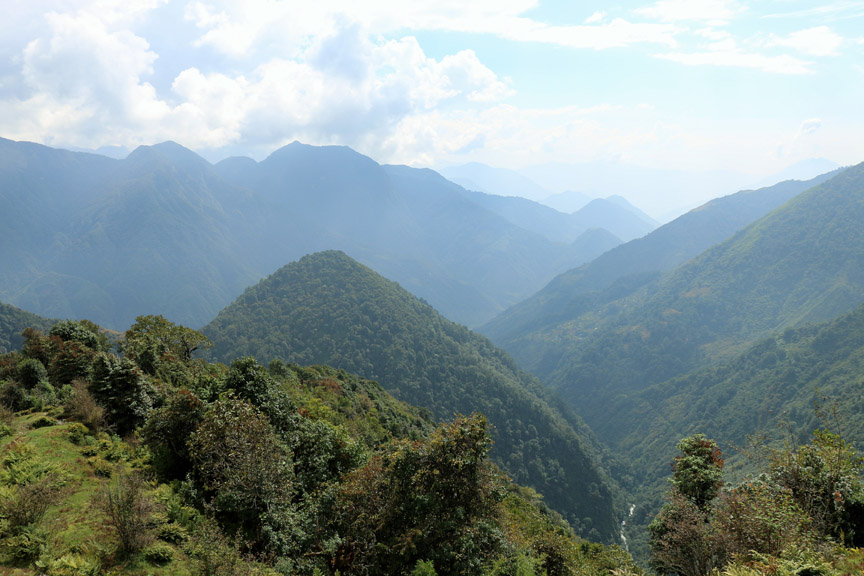 The trail drops steeply to the Imja Khola then crosses the Dubi Pass and descend into Yamphudin. The village has a mixed community of Sherpas, Rais, Limbus and Gurungs and is also home to a Kanchenjunga Conservation Area office. Accommodation Tea house/Tent.
The trail drops steeply to the Imja Khola then crosses the Dubi Pass and descend into Yamphudin. The village has a mixed community of Sherpas, Rais, Limbus and Gurungs and is also home to a Kanchenjunga Conservation Area office. Accommodation Tea house/Tent.
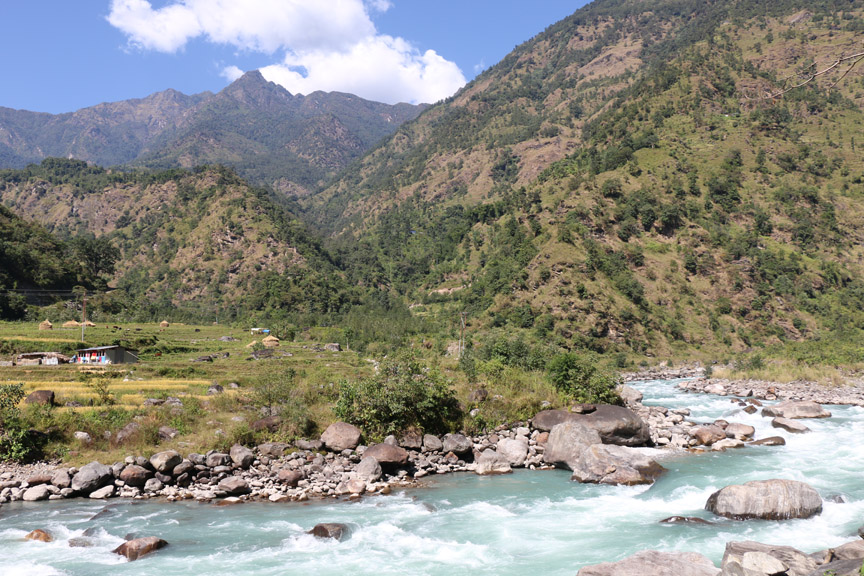 We steadily descend through villages and green forest alongside Kabeni River. Today is the final day of walking in the Kanchenjunga region, Congratulations on completing your trek. Time for celebration in Dahalgau. Accommodation Tea house/Tent.
We steadily descend through villages and green forest alongside Kabeni River. Today is the final day of walking in the Kanchenjunga region, Congratulations on completing your trek. Time for celebration in Dahalgau. Accommodation Tea house/Tent.
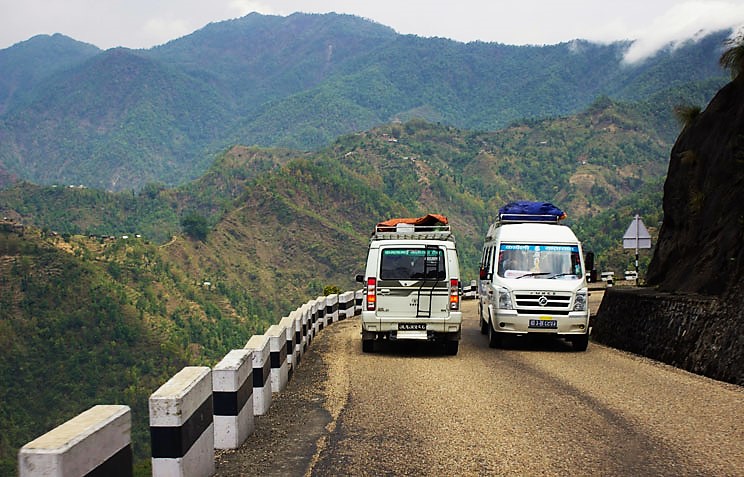 This will be a long day of driving to Birtamod. Accommodation Hotel.
This will be a long day of driving to Birtamod. Accommodation Hotel.
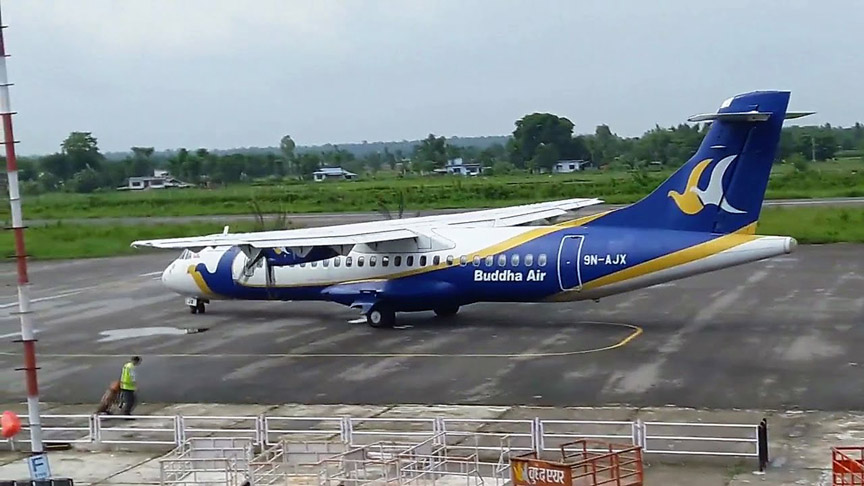 Early morning drive to Bhadrapur airport and flight back to Kathmandu and transfer to Hotel. Time to shop, relax, and get a massage.
Early morning drive to Bhadrapur airport and flight back to Kathmandu and transfer to Hotel. Time to shop, relax, and get a massage.
On this tour, you will enjoy white-water rapids and incredible scenery while rafting down a Himalayan river. The Trishuli River is the most popular rafting river in Nepal, The Trishuli River is the closest rafting river to Kathmandu, and it is a wonderful day excursion. The day begins with a pick up from your hotel in Kathmandu at 7:30 am. After driving 2.5 hours, you will reach Ratoghar, the rafting starting point. After an explanation of the safety and operating procedures, it’s time for fun and the journey begins bouncing down the rapids in the mighty Trishuli River. Each raft comes with a government certified rafting guide who will first instruct you on how to manoeuvre the craft through the rapids. In addition, all safety equipment will be provided, including a helmet and a life preserver. It is safe and exciting shooting through the rapids while enjoying the mountain views. There are villages alongside the river and you will pass under suspension bridges loaded with donkeys. The rafting time will be 3 to 4 hours depending on the season and speed of the river. After that, a packed lunch will be provided at a beach around 1 pm. After lunch, you will be driven 3.5 hours back to Kathmandu and dropped off at your hotel around 5:30 pm.
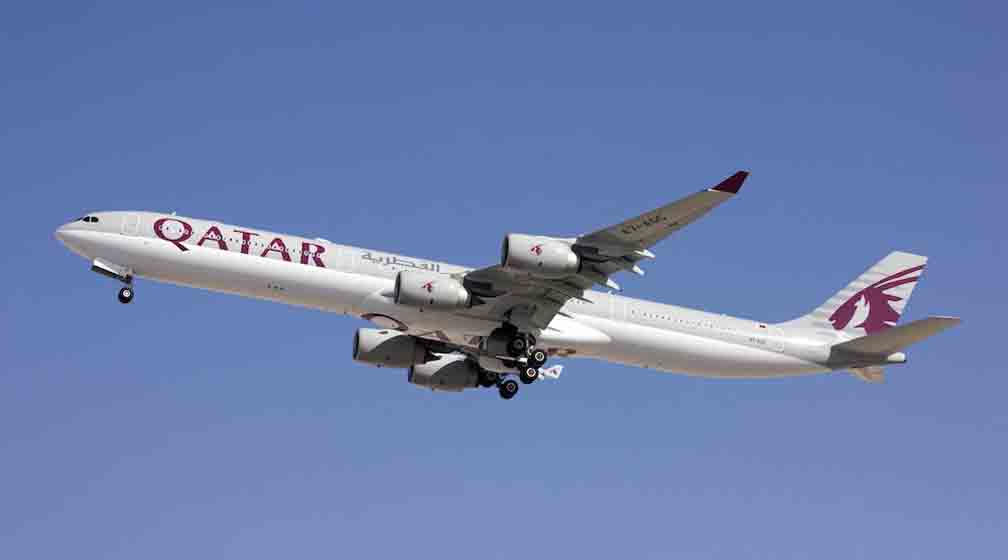 Time to go home with unforgettable memories and tell your friends and family of the fun and adventure that you had on your trek in Nepal. Or, you could also extend your trip. We can arrange many other tours and trips for you, such as River Rafting Adventure, Chitwan Jungle Safari, Scenic Flight, Cycling or even another trek in a different region. Trek Holiday would be always pleased and honoured to be at your service.
Time to go home with unforgettable memories and tell your friends and family of the fun and adventure that you had on your trek in Nepal. Or, you could also extend your trip. We can arrange many other tours and trips for you, such as River Rafting Adventure, Chitwan Jungle Safari, Scenic Flight, Cycling or even another trek in a different region. Trek Holiday would be always pleased and honoured to be at your service.
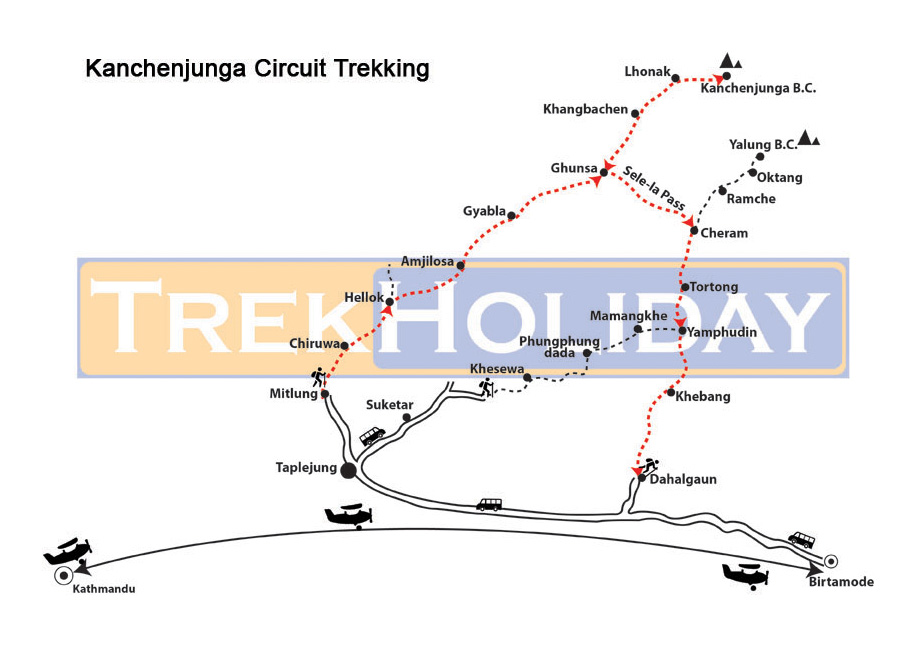
I did Kanchenjunga Circuit trekking with Trek Holiday team in last October. The staff was very kind and helpful. I enjoyed a lot in my trip. I recommend Trek Holiday for Trekking in Nepal. Thank you.